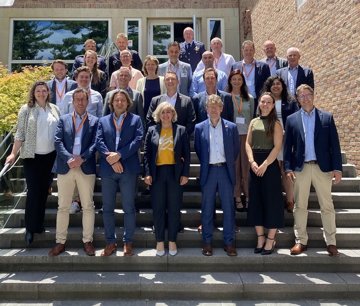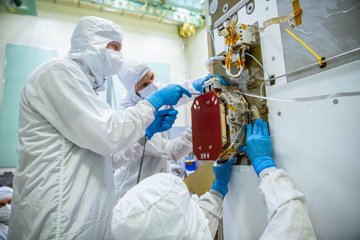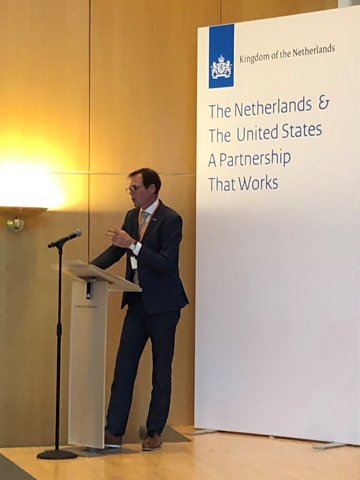Innovation mission Washington: many opportunities in the US for Dutch space sector
The Dutch space sector was well represented in Washington this week during an "innovation mission" led by NSO and organized in close cooperation with the Netherlands embassy in Washington and the association for space companies SpaceNed. The program included various company visits and networking events. After all, there are plenty of opportunities for the Dutch space sector in the land of unlimited possibilities.

The Dutch delegation in Washington
The innovation mission was the first major mission of NSO since the world was locked down by corona in 2020. The destination was chosen very deliberately: America is the largest and broadest space market in the world, with a lot of potential for Dutch knowledge and technology.
But how do small and medium-sized companies get in touch with the right partners in America? This is a task for the NSO and the Dutch embassy, which organized the innovation mission in close cooperation with industry association SpaceNed. They open doors that would otherwise remain closed to Dutch companies. And they bring the right people to the table, in the hope that the Netherlands and America will cooperate even more than they already do.
Dutch instrument
The group of Dutchmen talked to various NASA executives about recent and future projects. Also on the agenda were visits to Boeing, Northrop Grumman, Lockheed Martin and the University of Maryland, among others.

SPEXone being mounted on the PACE satellite (image: NASA GSFC)
At NASA's Goddard Space Flight Center in Greenbelt, Maryland, the group saw how the Dutch satellite instrument SPEXone is currently being integrated with NASA's newest Earth observation satellite PACE. SPEXone is the latest in a series of satellite instruments that the Netherlands delivered to America. For example, the Ozone Monitoring Instrument (OMI) has been doing research on the ozone layer on the Aura satellite for almost eighteen years. And last year the MIRI infrared instrument, which was partly designed and developed by the Netherlands, was launched on board the James Webb space telescope.
Capitalizing on opportunities
During a networking meeting at the Dutch embassy, participants spoke with representatives of the U.S. space industry about the rise of commercial space. And there were round table sessions on the themes of hardware, components and subsystems for satellites and earth observation and satellite applications. The conclusion of both sessions: there are plenty of opportunities for collaboration.

Harm van de Wetering: "a great start to a long term focus on cooperation with the US".
To capitalize on these opportunities, 350,000 euros will be available in the next three years as part of Partners for international business (PIB). This subsidy from the central government stimulates public-private partnerships of Dutch consortia abroad.
Today the delegation members return to the Netherlands. Harm van de Wetering, delegation leader and NSO director, looks back on a successful innovation mission: 'This mission was a fantastic start to a long-term focus on cooperation with America. The result of a week of intensive discussions and presentation of what the Netherlands has to offer is beyond expectation. American companies were noticeably impressed by certain capacities offered by the Netherlands and are looking forward to follow-up appointments. NASA, who gave the Dutch delegation the title 'powerhouse delegation', offered to work out a cooperation agreement with NSO that consists of several parts of mutual cooperation.